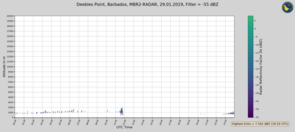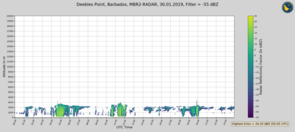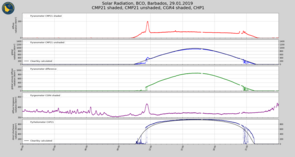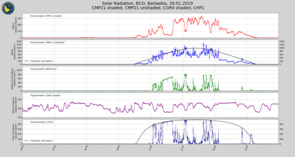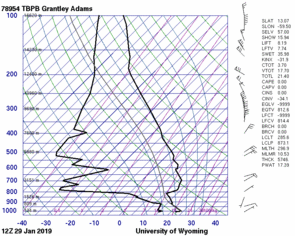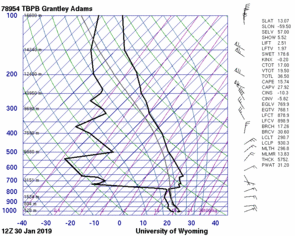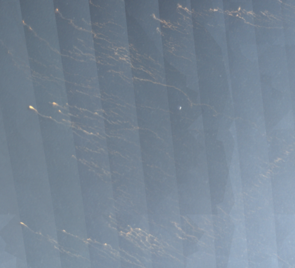30 Jan
Chers amis,
Voila (… isn’t everyone amazed at my new found mastery of French) … here comes our 'bande nuage'
The sounding from 00Z is from just before it arrived, which I would rather link to the strengthening of the winds at 0230Z, although clouds arrived first at more like 0100Z. Here what I find interesting is that the pattern of cloudiness seems to be set entirely by changes in dynamical processes confined to the lower troposphere. In the 0Z sounding we see the enhanced winds, but it does not seem to be transported down from aloft, and the free tropospheric dryness and the stability are more or less unchanged. Let’s see how things look at 12 Z today.
plus tard, bjorn
So I took last night off, and I wanted anyway to share the 0Z soundings and the full day view so that worked well. Yesterday illustrates nicely the difference a day makes. On 29 Jan we had a very clear day, days like this, when there are no clouds for the entire day (this case sunrise to set) are kind of like your birthday, they only come once a year or so, but less regularly, frankly I can’t remember a clearer 12 hr stretch … as fate would have it our lidar didn’t recover from a power glitch and missed the celebration — sometimes mother nature tries to keep her secrets — but help is on the way and we got a good view from some other instruments and twice daily soundings.
Striking from the radiation is the difference in downward LW which got as low as 350 W/m^2 at 0830 UTC (0430 Local time) on the 29th. More elevated LW in the first half of the record (between 0000 and 0700Z is associated with a moister subcloud layer and small clouds during the night, see radar). On the 30th it is a different story, all because of this Sargent Pepper-like mesoscale band of celebrating clouds, with downward LW fluxes increasing to about 430 W/m^2 during the overcast period (a difference of 80 W/m^2) around between 1900 and 2000 UTC. This could well translate into a difference twice as large at cloud top, which is compounded by reduced shortwave absorption (i’m guessing that the water vapor decrease is not enough to make up for the loss of SW to space). For reference a 2.5 km deep layer 150 W/m^2 of LW translates into a cooling rate of more 5 K/day. So it makes one wonder if these large mesoscale cloud regions are reinforced by radiatively driven circulations. Here the hint of a reverse flow in the sounding of 12Z 29.01.2019 sounding near 850 hPa reinforces these kinds of thoughts
… as for the ocean, well here the lack of LW sill be compensated by a surfeit of SW, so I am not sure of the net balance, but I guess the ocean is cooling with the atmosphere, but not as quickly. More exciting might be the developments in its horticulture; as Tobi developed an algorithm for identifying sea-grass, and I hope he doesn’t mind me sharing one snapshot from that. An offline discussion developed on the punctuated, tadpole like structure of some of these structures and whether they have a vortex termination. Another question is how they grow, i.e., how much is kinematics and how much is biology. Lastly is to what extent we might muster the resources to measure these. One idea would be, because the clouds are more mobile than the grass, that flying over the same area twice will give us a clear sky everywhere as clouds blocking the view on the first past won’t — barring mesoscale celebrations — block it in the second pass, giving a google-earth view to the world, where clouds are silently wiped away from the historical record … alas.
